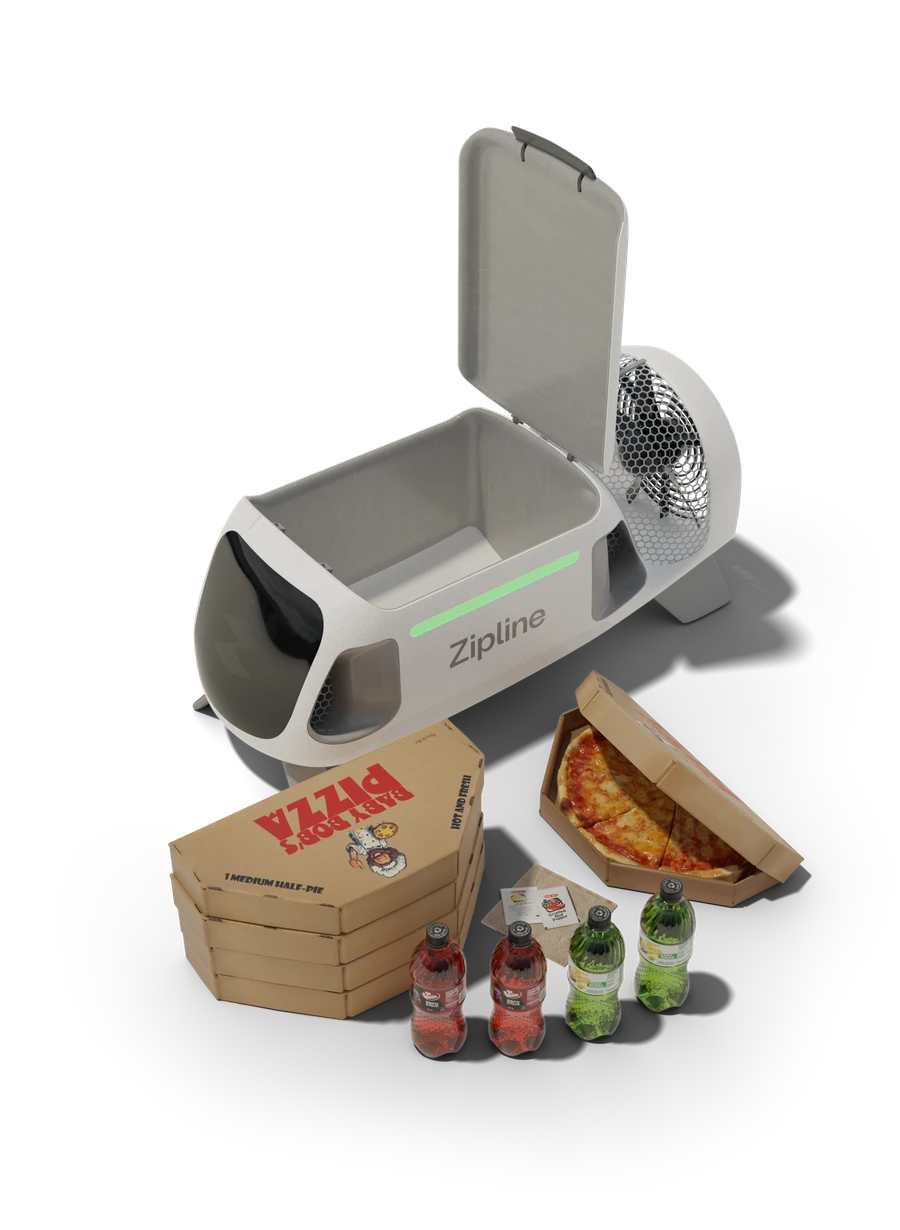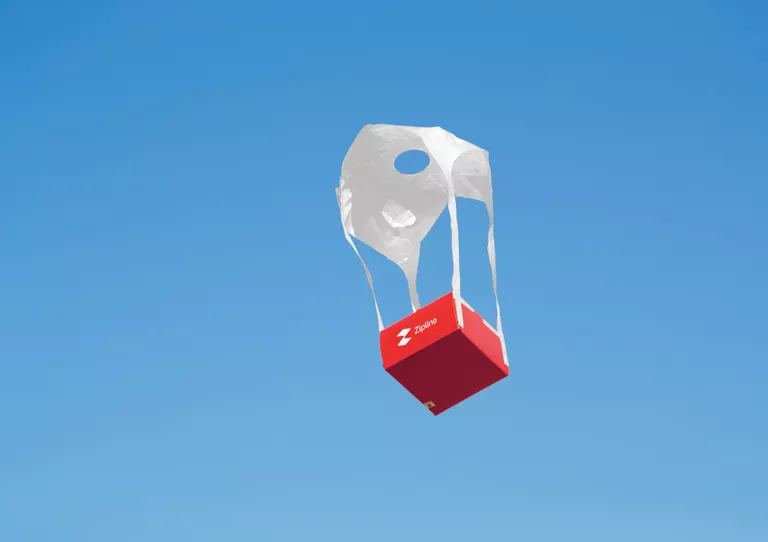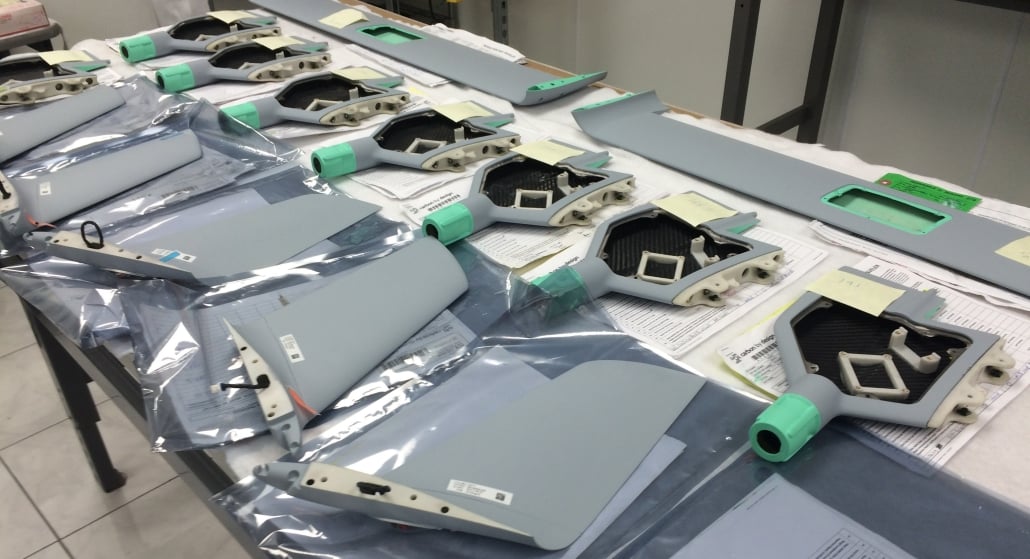
Charles R. Goulding and Preeti Sulibhavi explore the transformative synergy between 3D printing and drone delivery, uncovering how lightweight components and innovative designs are reshaping the logistics landscape.
Drones have captured global attention for reasons ranging from geopolitical conflicts to sightings of unidentified flying objects. However, amidst this media frenzy, one transformative application of drones is quietly revolutionizing logistics: delivery systems. The drone delivery industry is on the cusp of exponential growth, with companies like Zipline, DroneUp, and Matternet leading the charge. At the heart of this evolution lies a powerful enabler—3D printing technology, which is critical in manufacturing the lightweight, high-quality components that drones require.
The Growing Promise of Delivery Drones
Delivery drones are reshaping the logistics landscape by enabling faster, more efficient delivery of essential goods. Zipline, a leader in the field, has been instrumental in proving the model with its successful drug delivery operations in Africa. Now valued at US$4.2 billion, Zipline has raised US$500 million to expand its reach and capabilities. In the U.S., Zipline has already completed over 1.3 million deliveries in cities like Dallas, Salt Lake City, and near Walmart’s headquarters in Bentonville, Arkansas.
These drones, capable of carrying four-pound payloads, are particularly well-suited for pharmaceutical and food deliveries—sectors where speed and reliability are crucial. Consumer demand for quick and convenient delivery, as evidenced by the success of platforms like DoorDash and Uber Eats, is fueling this shift. Major players like Amazon, Walmart, and Google are heavily investing in drone delivery infrastructure to capitalize on the opportunity.

The Role of 3D Printing in Drone Manufacturing
The intricate requirements of drone manufacturing make 3D printing an ideal solution. Drones demand lightweight yet durable components to optimize flight performance, minimize energy consumption, and ensure reliability. Here’s how 3D printing is enabling the production of these critical components:
1. Lightweight Frames
Drone frames need to be sturdy enough to support payloads and withstand environmental stresses while remaining lightweight to ensure efficiency. 3D printing enables manufacturers to use materials like carbon-fiber-reinforced polymers and advanced lightweight composites. These materials are strong, lightweight, and customizable for specific drone designs.
For example, Zipline’s delivery drones use frames optimized for lightweight operation and aerodynamics. 3D printing allows for intricate lattice structures that provide strength without adding unnecessary weight, a key factor in enabling drones to achieve longer flight ranges.
2. Propeller Optimization
Propellers are among the most critical components of drones, directly affecting their thrust, stability, and noise levels. Traditional manufacturing methods can be limiting when creating complex propeller designs, but 3D printing overcomes these challenges.
Using high-resolution 3D printing, manufacturers can create custom propeller geometries tailored to the specific aerodynamic requirements of different drones. Materials such as reinforced nylon or carbon-fiber-infused filaments ensure durability and precision. This flexibility allows companies like Matternet to fine-tune their drones for healthcare and e-commerce applications.
3. Payload Delivery Systems
Drone payload systems must be robust yet adaptable for various types of cargo, from temperature-sensitive pharmaceuticals to fragile food items. 3D printing enables the rapid prototyping and production of modular payload bays that cater to these diverse needs.
For instance, DroneUp uses 3D printing to create custom delivery boxes with integrated shock-absorbing features. These systems protect delicate cargo during flight, ensuring customer satisfaction and reducing losses.
4. Camera and Sensor Mounts
Drones rely on cameras and sensors for navigation, obstacle detection, and delivery accuracy. Mounting these components requires precision and stability. 3D printing allows manufacturers to create custom mounts with high tolerances, ensuring that cameras and sensors remain aligned and functional even during turbulent conditions.
For example, drones designed for BVLOS operations will require enhanced sensor systems to navigate autonomously. 3D-printed mounts can accommodate these advanced technologies, integrating seamlessly into the drone’s structure.
5. Battery Housings and Cooling Systems
Efficient battery systems are critical for extending flight times and supporting heavier payloads. 3D printing allows for the creation of lightweight, thermally efficient battery housings that protect batteries while maintaining optimal temperatures.
Cooling channels can be integrated directly into the 3D printed housing designs, improving performance and longevity. Companies like Zipline and Amazon are exploring such innovations to enhance their drone fleets’ operational efficiency.

Examples of 3D Printing in Action
The synergy between 3D printing and drone manufacturing is already evident in several real-world applications:
- Carbon by Design, a California-based company, uses 3D printing to produce high-performance drone components for aerospace and defense applications. Their approach includes custom designs tailored to the specific flight requirements of each drone model.
- Relativity Space, though primarily a rocket manufacturer, demonstrates how additive manufacturing can create complex, lightweight components at scale. Their expertise is being translated into drone production, showcasing the versatility of 3D printing.
- Zipline employs 3D printing to iterate rapidly on prototype designs, ensuring their drones meet stringent performance criteria while maintaining cost efficiency.
Another company pioneering itself in the drone industry is Swoop Aero. Its The primary goal is to provide integrated logistics service to 100 million people by the end of 2025. Swoop Aero’s mission is to provide the world’s leading technology platform for sustainable and scalable drone logistics. We have covered Swoop Aero and its 3D printing drone projects previously on Fabbaloo.
The Regulatory Landscape
Drone delivery faces regulatory hurdles, particularly those imposed by the FAA. Current approvals are limited to line-of-sight operations, but the next significant milestone will be achieving beyond-visual-line-of-sight (BVLOS) capabilities. When this approval is granted, the market is expected to experience rapid expansion.
The FAA’s current limitations on drone operations remain a barrier to widespread adoption. Approvals for BVLOS operations will unlock the full potential of delivery drones, allowing them to cover larger areas and serve a broader customer base. The transition to BVLOS will also require more advanced drones equipped with sophisticated navigation and collision-avoidance systems—all areas where 3D printing plays a pivotal role.
The Research & Development Tax Credit
The now permanent Research and Development (R&D) Tax Credit is available for companies developing new or improved products, processes and/or software.
3D printing can help boost a company’s R&D Tax Credits. Wages for technical employees creating, testing and revising 3D printed prototypes are typically eligible expenses toward the R&D Tax Credit. Similarly, when used as a method of improving a process, time spent integrating 3D printing hardware and software can also be an eligible R&D expense. Lastly, when used for modeling and preproduction, the costs of filaments consumed during the development process may also be recovered.
Whether it is used for creating and testing prototypes or for final production, 3D printing is a great indicator that R&D Credit-eligible activities are taking place. Companies implementing this technology at any point should consider taking advantage of R&D Tax Credits.
Conclusion
Delivery drones are poised to transform logistics, enabling faster, more efficient delivery of goods across various sectors. The 3D printing industry stands to benefit significantly from this growth, as its technologies are integral to the manufacturing of lightweight, high-quality drone components.
From frames and propellers to payload systems and sensor mounts, 3D printing is driving innovation and efficiency in drone design. As companies like Zipline, DroneUp, and Matternet expand their operations, and as regulatory frameworks evolve, the demand for advanced manufacturing techniques will only increase.
The collaboration between the drone delivery and 3D printing industries represents a symbiotic relationship that will shape the future of logistics, creating opportunities for investment, innovation, and economic growth. With 3D printing at the forefront, the possibilities for drone delivery are truly limitless.
